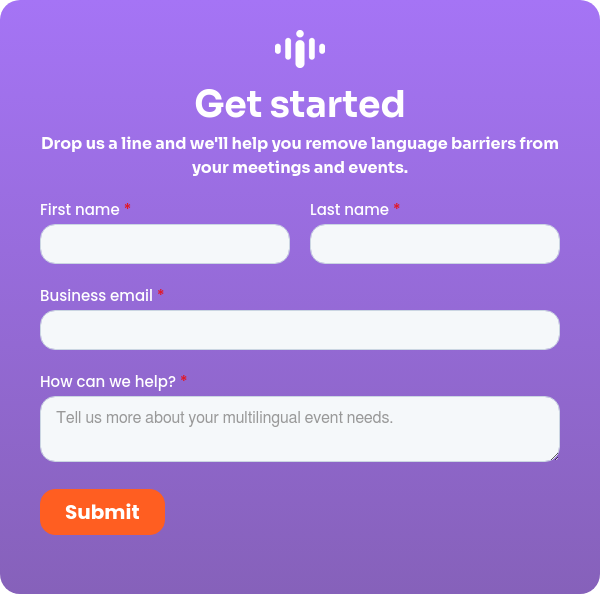The COVID-19 pandemic and subsequent lockdowns during 2020 and 2021 forced event managers to rethink how they host conferences, seminars, workshops, and other meetings.
With safety a primary concern, and the biggest obstacle to hosting live events, event managers needed an alternative.
For many, digital events provided a natural and cost-effective solution — they allowed event managers to continue while adhering to social distancing guidelines.
But that’s not all — combining the best of digital and onsite, hybrid events provide several benefits over traditional events, including greater reach, sustainability (both from an environmental and financial perspective), higher inclusivity, flexibility for attendees — as they can choose how they participate, with far less “red tape” as they are accessible online and much more.
Now that lockdown restrictions are a thing of the past, many event managers plan to continue using or start adopting hybrid event formats, by increasing their on-site presence while taking advantage of online solutions. According to research by the Event Manager Blog (a Skift brand), 70% of events are now hybrid or have the option to attend virtually.
Hybrid events have clearly become a go-to format. The global virtual events market was valued at $77.98 billion in 2019 — and it’s expected to grow at a compound annual growth rate (CAGR) of 23.2% from 2020 to 2027 — while many event management professionals are looking for new ways to leverage online and virtual event technologies to create new experiences.
But let’s take a few steps back and address an important question.
What is a hybrid event?
Put simply, a hybrid event is a tradeshow, conference, seminar, workshop, or any other meeting that combines a “live” in-person event with a “virtual” online component.
Take a seminar, for example — the seminar speakers (or panelists) could meet in person, while the audience attends “remotely” via online video conferencing solutions. This kind of approach has several advantages, from reducing costs and the event’s physical footprint to allowing event managers to reach wider audiences and generate higher levels of engagement.
You may also be interested in our blog article “What is a hybrid event and how do I get started?”
Why should you host a hybrid event?
Compared to traditional on-site setups, hybrid events are fundamentally more accessible and offer the “best of both worlds” — or even more.
For example, the online component of hybrid events means that they can be expanded infinitely, allowing event managers to reach previously unreachable audiences. New audiences speaking different languages can also easily be catered for through the use of interpreters — both of whom can work remotely as your event is online. No need to pay for visa permits or airplane tickets. You just need to install an online event management platform and real-time interpreting solution (such as Interprefy) to make this possible. Another option is to use an AI speech translation solution, like Interprefy Aivia, that works for both in-person and virtual attendees.
Furthermore, by hosting your events online, they’re much more “flexible” — you’re no longer tied to a specific time or location and may even only need a smaller venue.
We’re all familiar with the benefits of offline events — connectivity, personalisation, and so on so that remains even with hybrid events, offering attendees the option to attend in person.
Read more about the benefits of hybrid events here.
Of course, hybrid events can be challenging - from logistics to creating new value for exhibitors and sponsors to catering to different time zones. But the real challenge will be to flip the mindset of who you’re catering to. Having an on-site event with online access offered as a bolt-on may leave remote participants disappointed.
The key to solving this challenge is to create one event, but two experiences — and we have some best practice tips on how to do so.
Top tips for hosting a successful hybrid event
-
Focus on both your audiences
Understanding your audience will help to filter down an extensive list of hybrid event solutions and tips. Once you know what your attendees need — you can choose the right technology, i.e. event management platforms, and define the experience. Make sure you focus on the needs of both your audiences equally. While one may be tempted to focus on on-site participants slightly more, as they will probably have higher costs associated with participation (travel, visa, tickets, etc.), remote audiences may exceed on-site participation by high numbers. So focusing on the needs of the diverse audiences that you will attract is key.
-
Have on-site and online representatives for your attendees
To make it easier for your audiences to interact and engage with you and other attendees, have representatives for both the on-site and online experience. These attendees can cater to your guests, providing them with event information and content, as well as directing them to what they are looking for.
Online representatives are especially important, as they can help attendees with any technical issues or problems they may be having, as well as share useful content and help them to connect with other online attendees.
-
Have a marketing and content strategy in place
To maximise your hybrid event’s attendance, market and promote the event well in advance. This can include email marketing, social media (vital in today’s digital-first world), and the reach of your speakers and sponsors. It’s worth asking your speakers and sponsors to promote your event through their channels (particularly LinkedIn), as this will net you an already established and engaged audience.
Also, consider developing “exclusive” content for potential attendees — make it clear on the event landing page that those who sign up will get access to behind-the-scenes content. This can create a great deal of excitement and hype around your event. Once it’s over, make the content accessible to everyone so you can continue to attract interested parties.
-
Have the best online and on-site technical support
What happens if a microphone fails or connectivity issues appear? For every possible “problem” you need available support, more so than you would with just an offline or online event. What’s more, both online and on-site teams need to have good communication. In the case of Interprefy, we can use our network of on-site AV partners. We can also collaborate with whichever partners the client has.
Ideally, for your hybrid events, you should have technical personnel and partners monitoring closely to remedy any issues — you should also reassure attendees (both online and offline) that normal service will resume relatively soon.
If your online event management solution fails, it’s always worth having a backup option that can be rapidly deployed.
-
Find the right venue and work with the owners
No two venues are the same; many will have their own capabilities as standard. Some will be better suited for events than others — i.e. podiums and surround sound already set up — so you’ll have to carefully assess each option to see what’s appropriate for your hybrid event.
Bandwidth capabilities are essential, of course, as you’ll be catering to online audiences and need high-quality video and audio streams. Similarly, the aesthetic of the venue will matter for both those on-site and online, so make sure to choose somewhere that looks good and embodies the “theme” of your event.
As well as finding the right venue, work together with the venue operators to create the “ideal” on-site architecture. You should also try to make it as “safe” and as sustainable-responsible as possible. This will reassure attendees and increase brand sentiment.
Recommended resource:
Eco-friendly event planning guide: Access free download
-
Use the right platforms and setup
Online event management and virtual hosting platforms all offer different features. Some are suitable for large-scale events and conferences, whilst others shine when they’re used for small, personal meetings.
Take the time to evaluate the solutions on offer and cross-reference them with what you feel you need. It’s better to find something suitable for your requirements than invest in a comprehensive solution with features you never use.
As well as finding the right platforms for your hybrid event, you need partners and technical setups for your on-site event and to connect with your virtual event. You need a team ready to manage all of this for you and staff to look after attendees, otherwise, you’re opening yourself up to immense unknown risk.
-
Don’t ignore the language barrier
As a hybrid event is infinitely more accessible, you should expect people from around the world to attend. With this in mind, you need to ensure that you have translators and interpreters who can accommodate the most “common” language needs. The easiest way to find this information out is to look at your attendee data — what languages do most people speak? Based on that information, find translators and interpreting partners to suit.
To ensure a seamless experience — both on-site and online — you need real-time interpretation solutions that allow them to listen to content and interpret it for audiences.
Solutions like Interprefy make it easy for events to be delivered to multinational audiences at scale, and interpreters can work from anywhere at any time. And Interprefy’s project and technical support teams can support you on-site or remotely.
The best part? Interprefy can be added to most of the popular web conferencing, event management, and virtual hosting platforms. So there’s very little you need to do to get it working.
-
Take accessibility one step further
-
Make it a two-way street
The key ingredient to audience engagement is giving attendees the opportunity to participate and communicate with people at the event. This “two-way street” is easy to achieve with the right technological foundations in place. For example, speakers can incorporate content from virtual participants by either keeping an eye on the chat window or having a dedicated curator select and relay interesting or funny comments. Another tactic is to broadcast some of the video feeds from virtual attendees as part of the presentation. When any attendee sees themselves as part of the event, it all but guarantees a more immersive and meaningful experience.
-
Keep the momentum going
Once the event is over, there’s no reason not to keep the momentum going with new related content that can be sent to attendees. You can also chain supporting events after the fact, such as a panel discussion that explores key themes deeper or even giving attendees a chance to join if they meet certain criteria. By keeping the momentum going after the event, you can get maximum value from your investment and create a continuous cycle of brand exposure and engagement.
Hybrid events are here to stay
As event managers and attendees continue to realise the benefits of being able to choose how they host and attend events respectively, hybrid events will continue to attract audiences around the globe, both online and offline.
The challenge for event managers is the complexity of a dual affair. One event, two experiences — and they need to be consistent. What’s offered online must be replicated offline as closely as possible. Event managers need to pay close attention to how their events are engaged with by both audiences and use that information to continuously improve what they do.





 More download links
More download links



